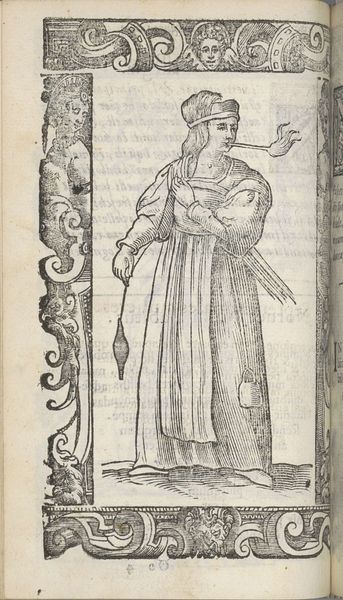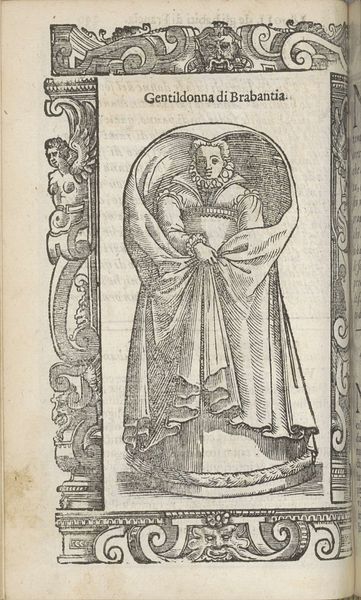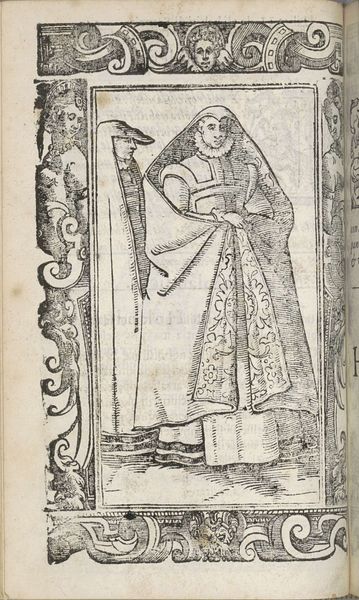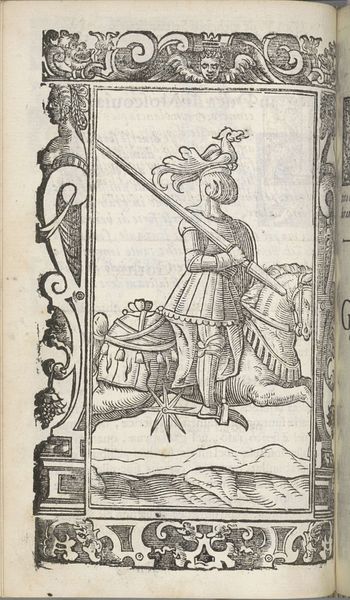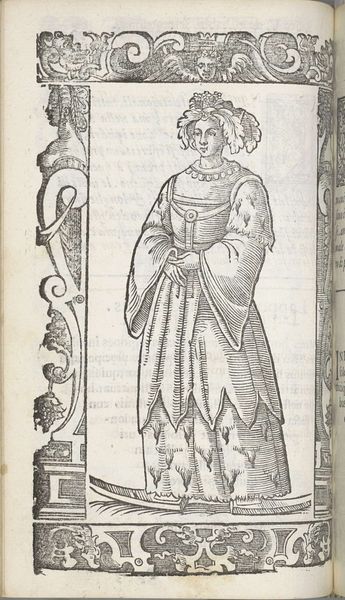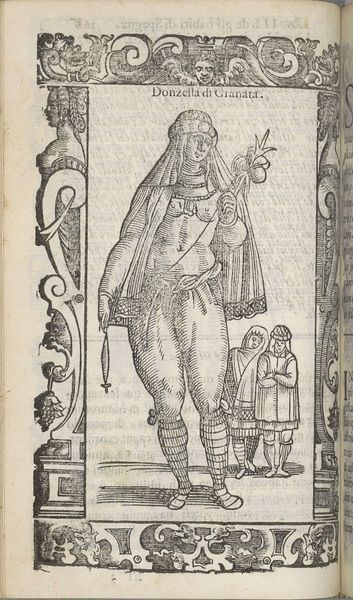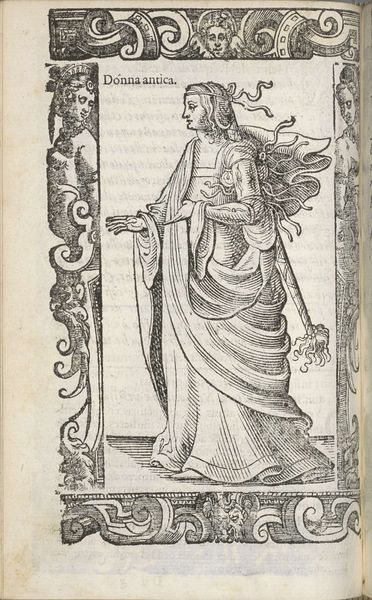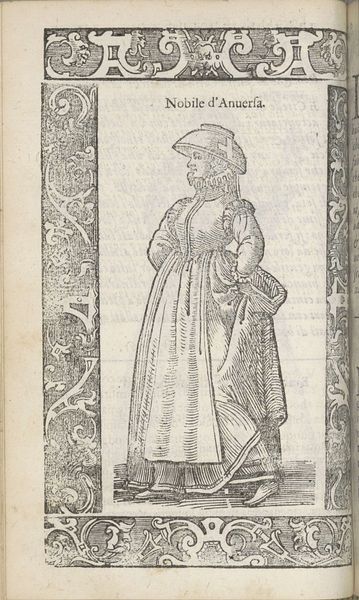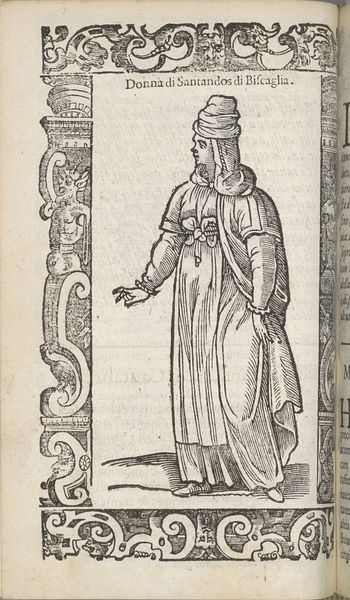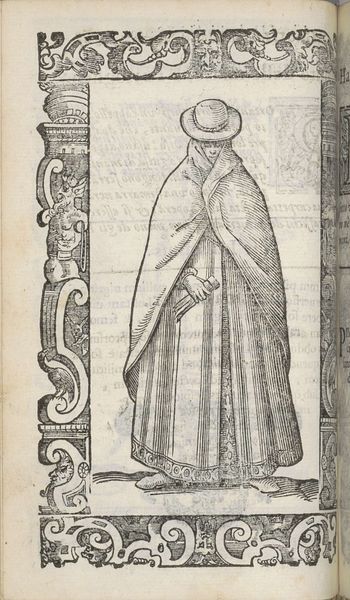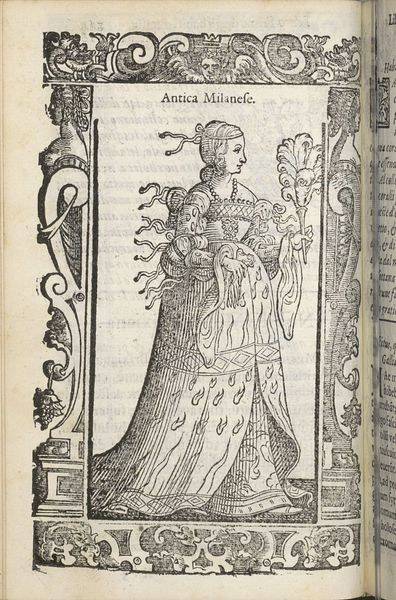
drawing, ink, engraving
#
drawing
#
medieval
#
narrative-art
#
figuration
#
ink
#
history-painting
#
italian-renaissance
#
engraving
Dimensions: height 167 mm, width 125 mm
Copyright: Rijks Museum: Open Domain
Editor: This is Christoph Krieger’s "Donna Christiana Settentrionale," created in 1598 using ink and engraving. There's an unsettling feeling, maybe because of the weight of the basket full of children on her back. What’s your take on this peculiar image? Curator: It is peculiar, isn’t it? And your reading of the woman bearing this ‘weight’ is astute. The figure itself represents a rather romanticised and orientalist view of Northern or Scandinavian women. Look at the composition. Doesn't it strike you how she’s framed, almost staged? Consider the role of early modern European art in shaping perceptions of other cultures and the burden placed specifically on women as symbols and keepers of culture and race. Who do you think decided on such imagery? Editor: So, it's not just a portrait of someone from the North, but a commentary? Someone decided to frame northern women as mothers burdened with race-keeping? Curator: Exactly. It invites us to question the power dynamics inherent in the act of representation. Krieger, through this engraving, participates in the construction of “otherness,” perpetuating stereotypes, and ultimately shaping a political landscape through imagery. Look closer: what does the gaze of the woman tell you? Editor: She is carrying quite the burden, and appears resigned, but maybe there is some determination there. I guess that there is a political reading for every gaze. Curator: Yes. Think about whose stories get told, and whose get erased in historical narratives and how gender and cultural identity intersect with these power dynamics. What do you make of the ornamental border? Editor: Now I see how even the "decorative" elements have meaning. They amplify the message by setting a classical stage for the main actor. It really wasn't what I expected! Curator: Precisely. This is why approaching historical artworks with contemporary critical perspectives is important. What seemed to be a simple engraving reveals itself to be an archive of cultural biases, open for our deconstruction.
Comments
No comments
Be the first to comment and join the conversation on the ultimate creative platform.
